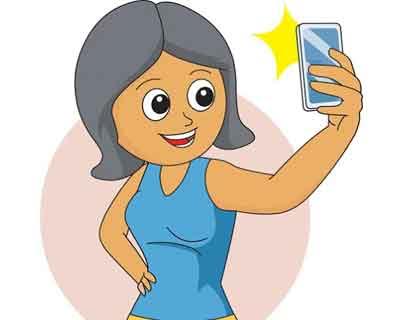- Home
- Editorial
- News
- Practice Guidelines
- Anesthesiology Guidelines
- Cancer Guidelines
- Cardiac Sciences Guidelines
- Critical Care Guidelines
- Dentistry Guidelines
- Dermatology Guidelines
- Diabetes and Endo Guidelines
- Diagnostics Guidelines
- ENT Guidelines
- Featured Practice Guidelines
- Gastroenterology Guidelines
- Geriatrics Guidelines
- Medicine Guidelines
- Nephrology Guidelines
- Neurosciences Guidelines
- Obs and Gynae Guidelines
- Ophthalmology Guidelines
- Orthopaedics Guidelines
- Paediatrics Guidelines
- Psychiatry Guidelines
- Pulmonology Guidelines
- Radiology Guidelines
- Surgery Guidelines
- Urology Guidelines
Selfie Elbow, Texting Thumb new emerging medical conditions

Selfie Elbow, Texting Thumb new emerging medical conditions. Doctors are encountering more and more repetitive stress injuries (RSI) from overuse of smartphones and tablets – the main instigators of emerging conditions like texting thumb and selfie elbow, notes UT Southwestern rehabilitation specialist Dr Renee Enriquez.
Selfie taking is emerging as an avid sport in which everyone can participate and share self-portraits with the world. And like any other sport, it too has its share of injuries. Although it is too early to comment on the excessive use of the elbow or thumb while clicking a selfie, there is always a possibility that by incorrect stretching of the tendons, an injury can be caused to joints like the elbow
“With all overuse injuries, rest is the most important part of recovery. Complete rest is best, but since technology is a required part of our everyday lives, limiting the time participating in these activities is recommended,” says Dr. Enriquez, whose expertise includes musculoskeletal treatments and interventional pain management.
The average person sends more than 40 emails daily and spends dozens of additional hours per week texting. One recent survey reported teen boys average 3,400 texts each month, while teen girls average 4,000 texts. Texting thumb is inflammation of the tendon sheath that can lead to long-term pain and disability affecting the tendon of the long flexor muscle of the thumb.
“Consider using your nondominant hand or another digit to avoid this condition,” says Dr. Enriquez, who specializes in nonoperative treatments. “The benefit of switching things is that it will strengthen your brain and improve your dexterity.”
Selfie elbow can occur when you frequently abandon favorable ergonomic positioning in the pursuit of finding the best angle for your next social media post. Shooting selfie after selfie can strain forearm muscles, resulting in trauma to the part of the tendon that connects to the elbow joint.
“Selfie sticks, however much the nuisance, are a great way to avoid overuse injuries in the upper extremities,” she says. “Technology will continue to advance and so will its gadgets for easier use and applicability. Rest breaks and hand shifts can help us handle the strain in the meantime.”

Disclaimer: This site is primarily intended for healthcare professionals. Any content/information on this website does not replace the advice of medical and/or health professionals and should not be construed as medical/diagnostic advice/endorsement or prescription. Use of this site is subject to our terms of use, privacy policy, advertisement policy. © 2020 Minerva Medical Treatment Pvt Ltd